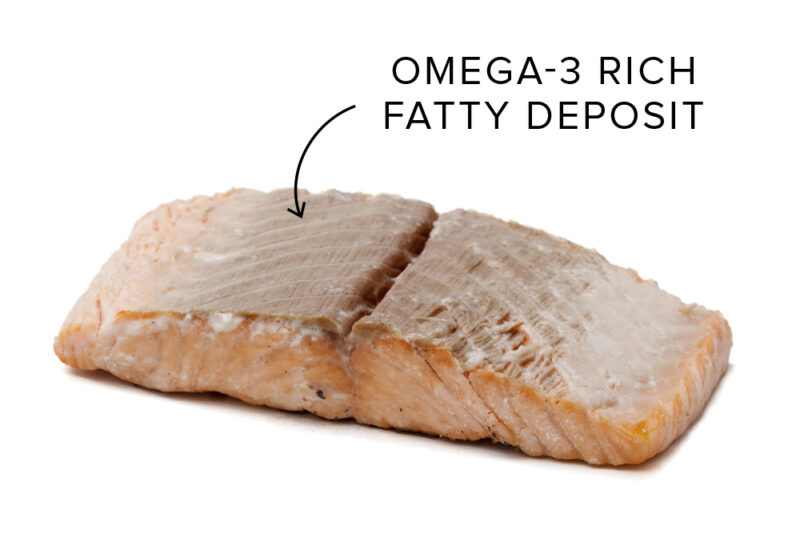Are Grilled Chicken Wings High in Cholesterol?
Chicken wings are a popular snack at parties, sports events, and barbeques. They are crunchy, juicy, and delicious. Grilled chicken wings in particular are a healthier alternative to fried chicken wings, which are high in calories and saturated fats. However, many people worry about grilled chicken wings being high in cholesterol. In this article, we will explore the nutritional facts of chicken wings, compare grilled and fried chicken wings, understand cholesterol’s role in our body, discuss the link between cholesterol and heart diseases, and provide tips on making healthy grilled chicken wings.
Introduction
Cholesterol is a type of fat found in our body that has several functions including producing hormones, vitamin D, and bile acids which help us digest fats. Our liver produces most of the cholesterol needed by our body. However, excess consumption of certain foods can lead to high levels of cholesterol in our blood which can result in health problems such as heart disease.
Overview of Chicken Wings
A chicken wing consists of three parts- the drumette (thick part), the wingette (flat part), and the tip. One medium-sized chicken wing with skin (25g) contains 42 calories, 3 grams of fat, 8 grams of protein, and 14 milligrams of cholesterol.
Chicken wings can be cooked in various ways such as deep-fried, baked, or grilled. Grilling is a healthier way to cook chicken wings than deep-frying because it uses less oil. Grilled chicken wings have a smoky flavor and crispy skin.
There are different types of flavors available for chicken wings such as barbecue sauce, buffalo sauce, lemon pepper seasoning or sweet chili sauce. These flavors add taste but also add extra calories and sugar to the wings.
Grilled Chicken Wings vs. Fried Chicken Wings
Comparing the nutritional value of grilled and fried chicken wings reveals stark differences in calorie, fat, and cholesterol content.
- A medium-sized grilled chicken wing with skin (25g) contains 42 calories, 3 grams of fat, and 14 milligrams of cholesterol.
- A medium-sized deep-fried chicken wing with skin (30g) contains 99 calories, 7 grams of fat, and 27 milligrams of cholesterol.
Frying increases the calorie count, fat content, and cholesterol levels in chicken wings. Therefore, grilling is a healthier option than frying as it retains the nutritional value of the wings.
However, it’s important to note that grilling chicken wings can produce harmful chemicals called heterocyclic amines (HCAs) which are formed from reaction of amino acids, sugars and creatine when the meat is cooked at high temperatures. HCAs have been associated with an increased risk of cancer. To reduce HCA formation while grilling, choose lean cuts of meat and marinate the meat before cooking. Avoid overcooking or charring the meat.
Understanding Cholesterol
Cholesterol is carried in our blood by proteins called lipoproteins. There are two types of lipoproteins: low-density lipoproteins (LDL) or “bad” cholesterol which carries cholesterol from our liver to our body cells and high-density lipoproteins (HDL) or “good” cholesterol which carries excess cholesterol back to our liver to be broken down for removal from our body.
The normal range for blood cholesterol levels is between 125-200 mg/dL. LDL cholesterol levels should be kept below 100 mg/dL and HDL levels above 60 mg/dL to maintain optimal heart health.
Foods high in saturated and trans fats, like deep-fried chicken wings, can raise LDL cholesterol levels in our blood. A diet high in dietary fiber, fruits and vegetables, lean protein sources like grilled chicken wings, and healthy oils can lower LDL cholesterol levels while increasing HDL cholesterol levels.
Chicken Wing Nutrition Facts
Depending on the size and cooking method, chicken wings can provide varying amounts of nutrients. A serving size of 4 grilled chicken wings (114g) with skin provides:
- 240 calories
- 17 grams of fat
- 19 grams of protein
- 70 milligrams of cholesterol
Apart from protein and fat, chicken wings are an excellent source of vitamins and minerals such as vitamin B6, vitamin B12, zinc, and iron.
Cholesterol’s Link to Heart Diseases
Elevated levels of LDL cholesterol in our blood can lead to plaque buildup in our arteries. This buildup narrows the arteries and reduces blood flow to vital organs such as the heart which increases the risk of heart diseases.
The link between high cholesterol levels and heart diseases emphasizes the need to manage our cholesterol levels and make healthy lifestyle choices such as exercising regularly, reducing stress, maintaining a healthy weight, avoiding smoking tobacco products, limiting alcohol intake, and eating a balanced diet.
How to Make Healthy Grilled Chicken Wings
To make healthy grilled chicken wings, follow these tips:
- Remove the skin – The skin is where the fat and cholesterol are present. Removing it reduces the calorie count, saturated fats and cholesterol levels.
- Marinate the wings – Marinades add taste, but also help tenderize the meat. A marinade of herbs, spices, vinegar, or citrus can also reduce the formation of HCAs while cooking.
- Choose a healthy sauce – Instead of sugary sauces, choose low-fat, low-sodium alternatives or make your own by mixing plain Greek yogurt and mustard.
- Avoid overcooking – Overcooking chicken wings leads to acrid taste and increases HCAs formation.
Avoiding Unhealthy Frying Techniques
To avoid unhealthy frying techniques when making chicken wings, follow these tips:
- Avoid double-frying – Double-frying uses more oil and leads to increased calorie intake than single frying
- Deep fry in healthy oils – Healthy oils such as olive oil or coconut oil have a higher smoke point and produce fewer harmful compounds than oils such as vegetable oil or canola oil when fried at high temperatures.
Alternate Protein Sources
If you are looking for an alternative protein source that has a lower cholesterol level than chicken wings, there are several options. Some vegetarian sources of protein include lentils, chickpeas, tofu, tempeh, seitan, nuts, and seeds. Fish such as salmon or tuna are also high in protein but lower in saturated fat and cholesterol.
Conclusion
In conclusion, grilled chicken wings with skin have less fat and cholesterol compared to their deep-fried counterparts. However, it’s important to remember that our body needs moderate levels of cholesterol; too much cholesterol can lead to health problems like heart diseases. The nutritional value of chicken wings depends on the serving size, preparation method, and additional flavorings. It’s essential to make healthy choices when consuming chicken wings while also including other sources of protein in your diet. A balanced diet, exercise, and maintaining a healthy weight are essential for maintaining optimal heart health.
Frequently Asked Questions
Can Grilled Chicken Wings Cause High Cholesterol?
No, grilled chicken wings themselves do not cause high cholesterol. However, if the marinade used contains high amounts of saturated fat and cholesterol, it can contribute to high cholesterol levels.
What Is the Recommended Portion Size for Grilled Chicken Wings?
The recommended portion size for grilled chicken wings is 3-5 ounces per serving. This is equivalent to about 3-4 wings, depending on their size.
What Are Some Healthy Ways to Prepare Grilled Chicken Wings?
To prepare healthy grilled chicken wings, use a low-fat marinade or seasoning instead of ones that are high in saturated fat and cholesterol. You can also opt for boneless wings, which have less fat than the traditional bone-in wings.
Are There Any Health Benefits to Eating Grilled Chicken Wings?
Grilled chicken wings are a great source of lean protein, which is essential for muscle growth and repair. They also contain important vitamins and minerals such as vitamin B6 and phosphorus. However, it’s important to monitor your portion sizes and overall dietary intake to maintain a balanced diet.







